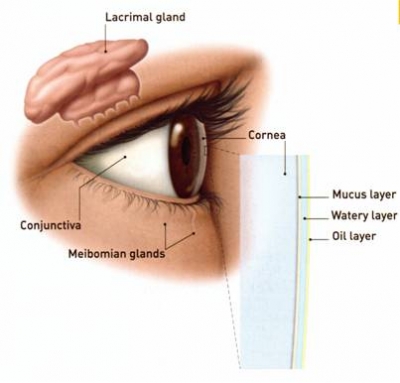Dry Eye Syndrome
One of the most common visual problems of Central Oregon residents is dry eye, and many patients donít recognize it. You might not expect excessive tears running down your cheeks to be dry eye, but it actually is one of the symptoms. Other symptoms include dry, gritty, scratchy eye, red eyes and even large fluctuation in vision. Effected patients are usually female and may be as young as the early twenties. Contact lenses often aggravate the problem, as does the dryness in Central Oregon.
Dry Eye symptoms may indicate more serious systemic health problems that can detected during the workup. Research has suggested that low testosterone may play a role in some dry eye sufferers. Women usually have about 11% of the testosterone levels of a man, but these levels can fluctuate as part of the aging process.
Artificial Tears
Artificial tears are the first treatment and work best when they are preservative free. Preservatives in drops often irritate the already sensitive cornea. Donít use drops that ďget the red out.Ē These contain chemicals that dry the eye even more. If the symptoms are worse in the mornings when you first open your eyes, then special ointments at bedtime often provide relief.
Patients who donít obtain sufficient relief with these efforts often do very well on Restasis, a prescription drug we use with dry-eye patients.
Nutrition
The most common problem our office sees as a result of LASIK surgery is dry eye. One of the great ideas that came out of these dry eye patients was an attempt to improve tears with nutrition.
Essential fatty acids have turned out to be very successful in about 50% of our patients eliminating all or most of the dry eye symptoms. There are several possible approaches, and patients should discuss this with one of our doctors.
Punctual Occlusion
For those patients with significant dry eye symptoms, punctual occlusion is often a very effective solution. These plugs are inserted in the tear drains, or puncta, in order to slow down the tearís exit from the eye.
Our office has experienced an extremely high rate of satisfaction with plugs, though the patient should first discuss all possible complications with Dr. Ayres or Dr. Bonetto.

